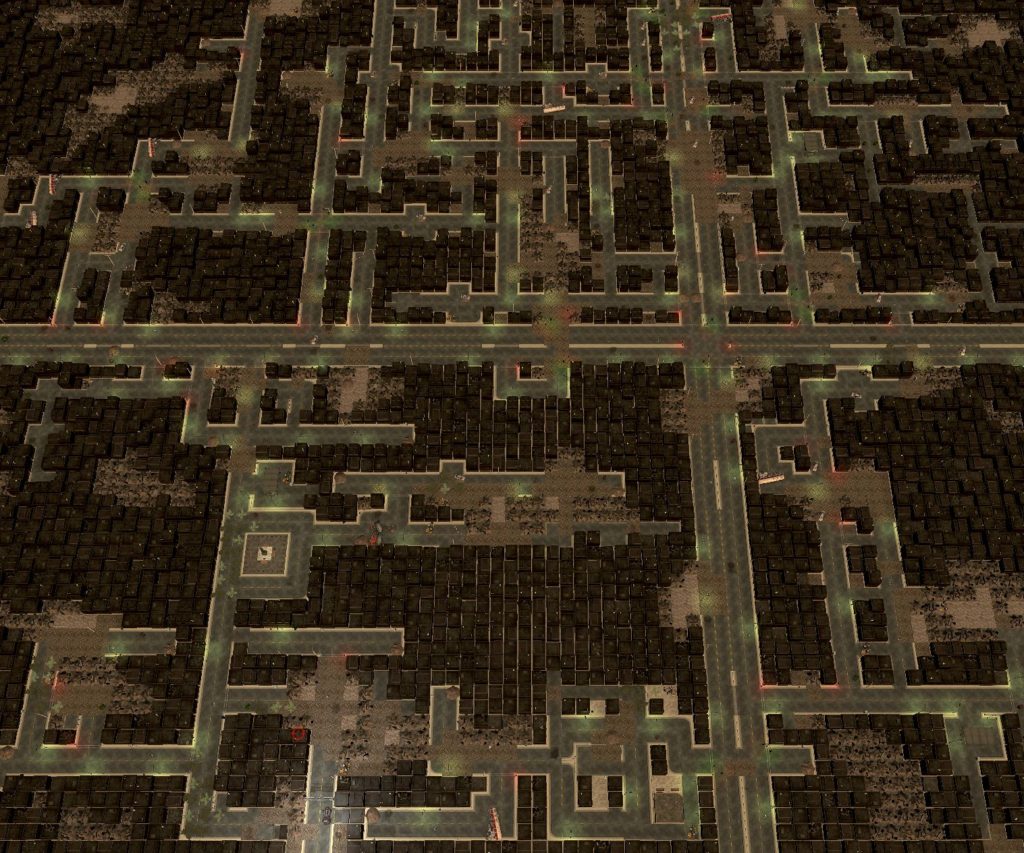I was just thinking about the challenges of generating a city map for Auto Fire and realized that I’ve accomplished a whole lot and haven’t really discussed it in a long while.

Really early on in development I created some tools to generate block templates that get placed during map generation. This allows me to work with actual crafted sections of map (with variant buildings and other things that can be adjusted after the template is laid down). It’s more or less a requirement for cities since the classic “cave-style” procgen or even dungeon layout techniques don’t work as well as I’d like.
I create template patch objects that have a bunch of data attached to them such as exit points (for cities) as well as a variety of variable bits like spots for random decor and building styles (depending on the generation profile I’m using).

The block data that I save out actually even supports 9-slice scaling, so I can declare borders to be of a fixed size, but the center to be a repeating tile section that can be any size. It’s really useful in some situations like when I want a long crafted section of wall, or a large 4-lane boulevard on a city map.
For cities, however, I actually work mostly in blocks that are 4×4 in size, with street connectors that are 1, 2 or 4-lanes in size. If I want to make a larger block such as 4×8 or 12×16 I can do that as well. Getting the whole system to rotate blocks properly was probably the hardest part (you can see in the build right now that I have a few multi-tile objects that don’t yet collide properly… my work is never done).

I’ve got several workspace maps that I use to create these blocks of content (desert outpost, city, overworld, etc), and it’s a scalable system that could support a whole ton of layouts. When I say “damn I gotta work on content”, making 10x the tile variations and cities with specific flavors are ways that I could take advantage of the systems I’ve created.
Anyway, this approach isn’t particularly new but it works great for my needs… It deserves a more crunchy article dedicated to it, but it’ll have to go on the to-do list for sometime in the future. For now, hope the peek at the approach was a little interesting.
